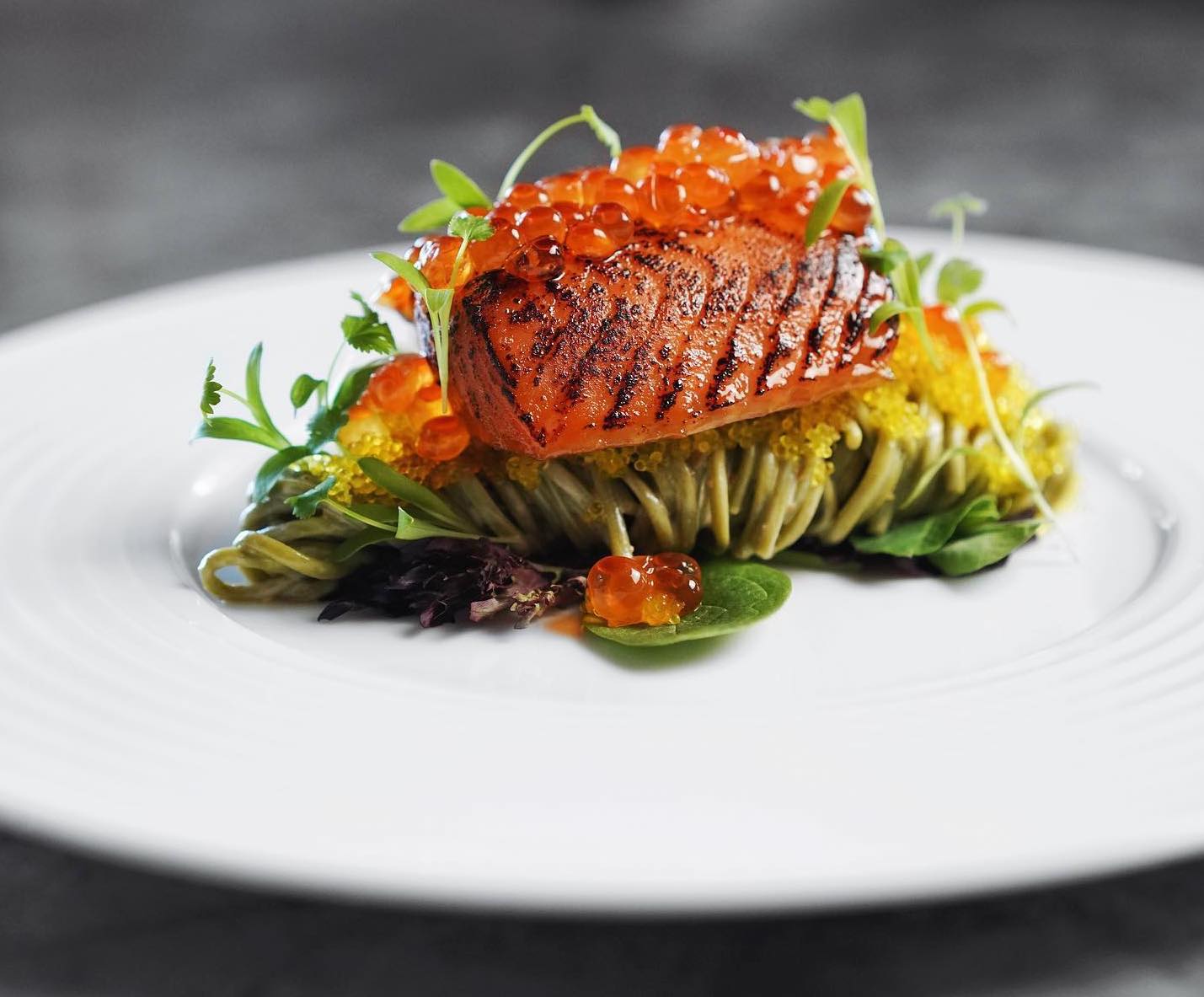Flame-finished Ōra king salmon arrives at our table, nestled on a twirled roll of green tea soba noodles in creamy sesame ponzu. Yuzu tobiko and ikura garnish the dish, like pearls on a necklace. The salmon, delivered from New Zealand, is known for sustainability and premium quality. I savour each bite of the fish’s silky texture and full-fat flavour.
My family and I are enjoying a celebratory dinner at Land and Sea, a restaurant melding West Coast cuisine with Japanese culinary influences that has enlivened a sleepy part of Kerrisdale. Finely dressed diners relish Yarrow Meadows duck with local wild mushrooms, baby carrots, kabocha croquette, and yakiniku gravy, or ravioli stuffed with Dungeness and snow crab, with quail egg drop, sweet tomato chili sauce, soft shell crab tempura, and tobiko.
I’ve followed the career of chef and co-owner Kevin Lin for years, from Moroccan cuisine at the now closed Argan Bistro, to cheeky Asian fast food at Uncle’s Snack Shop in Richmond. He found his groove at the refined Land and Sea, where diners amp up the luxury with add-ons such as Northern Divine caviar, Miyazaki A5 wagyu, Quebec foie gras, truffles, and both local and Hokkaido uni.
Lin clearly enjoys delicacy. Even hot dogs he posts to Instagram for a meal at home are made from wagyu in brioche buns, topped with orange-hued strips of custardy uni, sea urchin gonads. So I’m surprised when he tells me he doesn’t actually like uni; his partner Steph Wan, who co-owns the restaurant, adores it, however, as do his clientele.
For Lin, an ingredient such as uni is luxurious because of personal taste, quality, and the difficulty in obtaining it. He uses AAA Hokkaido uni, which is prized for its briny sweetness, to offer his customers the best, and he gives them the best of everything. And while he does his utmost to source locally and sustainably, he also goes farther afield for unique ingredients. He sources all-natural beef from Beretta Farms in Ontario for its distinctive gamey flavour. “Even though it’s not extraordinarily expensive, it’s a luxury in the sense that it’s a tougher product to bring in and not so widely available,” he says. Lin says his Kerrisdale diners have an appreciation for premium ingredients, and are willing to treat themselves. “It seems to work for us. People are attracted to these things. And I tend to give people what they want,” he says.
Land and Sea embodies an intriguing paradox to luxury food on today’s fine dining tables. On one hand, hyper luxuries, such as beluga caviar and imported wagyu beef, are still the gold standard of great food, sought after and served in almost every world-class restaurant. On the other, ideas of sustainability, localism, and plant-based or farm-to-table eating are redefining great food. Restaurants such as Denmark’s three-Michelin-star Noma, Norway’s spectacular local-seafood driven Under, or Vancouver’s lauded Acorn, craft great food more by what is local, seasonal, and sustainable than what is rare or expensive. In the modern food scene, what does luxury mean anymore?
To answer this question, I embarked on a journey through the shifting terrain of luxury ingredients, learning about their origins and immersing myself in the ways luxury has been defined. The chefs I spoke to argued for the continued presence of conventional luxury ingredients in dining, but they also see luxury as an elastic term that encompasses unique preparation, eco-sourcing, and relationships with local producers. But first I had to return to what luxury means to me.
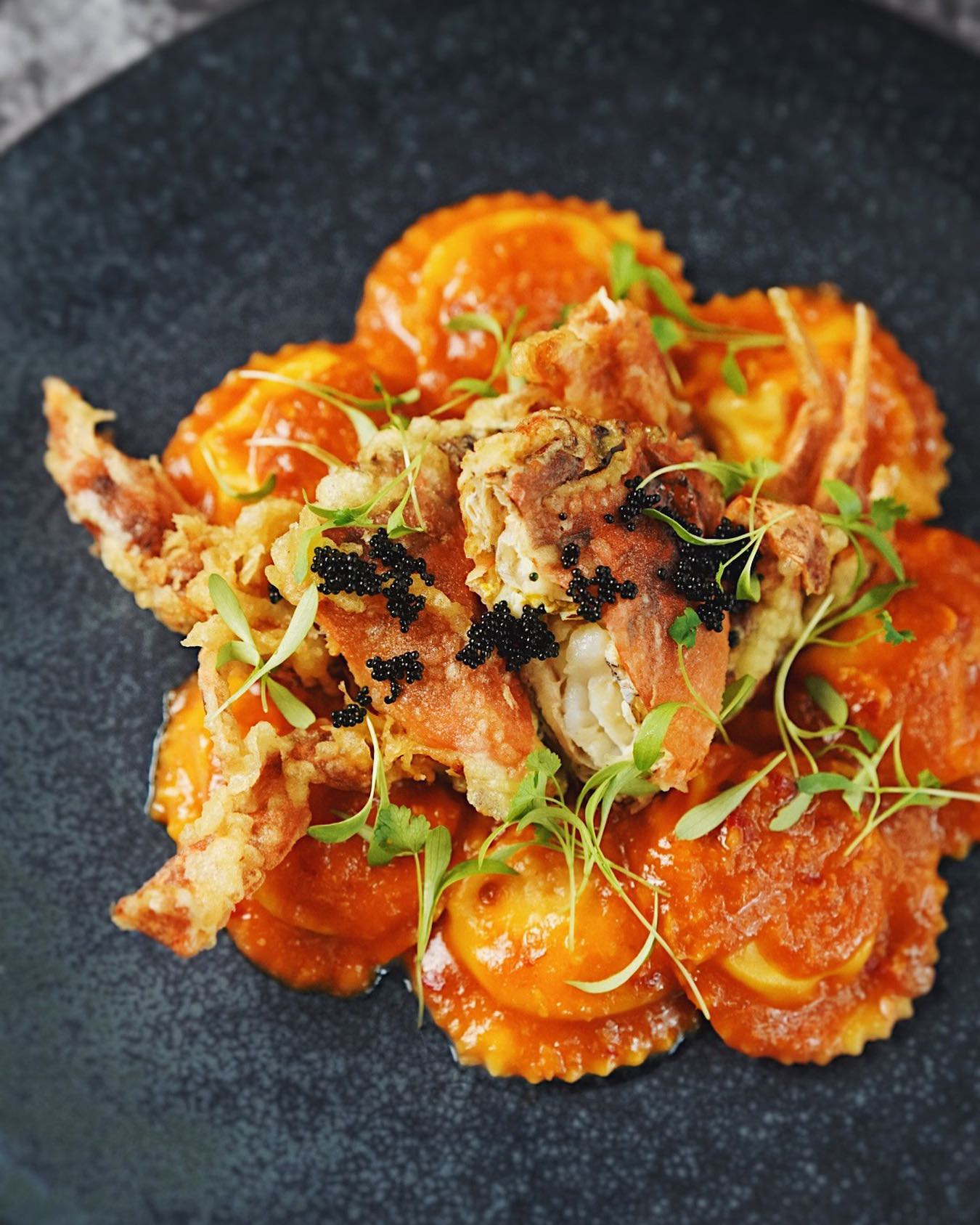
Soft shell crab tempura at Land and Sea.
My maternal grandmother grew up in the early 20th century in a small village in China’s Guangdong province where most meals consisted of rice and vegetables. In a poor family, meat was a luxury, only enjoyed for special occasions. Her mother would slaughter a chicken, and slow cook it in soy and wine until it was tender and fragrant. When she migrated to Cape Town, South Africa, to marry my grandfather, the Chinese ingredients used were no longer available. Rosy cured lap cheong, and fragrant black mushrooms, became rarities, pounced on, and then used sparingly.
In 1967, the family immigrated to Vancouver to escape apartheid. My grandmother joyfully shopped at Chinatown, revelling in all the ingredients previously inaccessible to her. She invited dozens of guests for feasts at my parents’ house, spending extravagantly on delicacies, such as abalone and sea cucumber, that symbolized good fortune. She spent days soaking, scrubbing, and tenderizing the seafood before labouring over dishes of sea cucumber with chicken and dried shrimp and soy-braised abalone on the day of the big dinner.
Although my grandmother passed away four years ago, I still mentally consult her when I order at a restaurant. Does the occasion warrant an order of wagyu, or should I choose skirt steak? For her, luxuries belonged to special occasions, especially when she wanted to convey generosity to her cherished family and friends. She disapproved of excessive spending on an ordinary meal.
These questions about the place of luxury are hardly new. Ever since humans began to eat for pleasure and not only for sustenance, luxury ingredients have figured in their diets. As food became abundant, the specific food eaten and its preparation became more important than quantity. Archeologists have found the remains of oysters, presumably transported from the Atlantic, in Roman sites in Switzerland. In sixteenth-century Europe, game meat served as a status symbol because only aristocratic landowners had access to it on their estates. In ancient Hawaii, poi dog was associated with prestige, while in 18th and 19th century Polynesia, basic ingredients became rarefied through lengthy preparation, such as the fermentation of breadfruit to make a paste for feasting in Mangareva and the Society Islands.
Just as food has evolved, so have definitions of luxury. While food historians and archeologists argue that luxury changes according to milieu, it is usually attached to desirable ingredients that are challenging to obtain or require labour-intensive work. Better quality, such as texture or fat content, raises an ingredient’s status, while the foreign origins of an ingredient can add appeal.
More recently, in a backlash against large-scale and opaque industrial food systems, consumers have placed value on artisanal food. Researchers have found that smaller producers that employ traditional practices are perceived to be more authentic; they represent the underdog, fighting against the Goliath of factory farming. A menu at a farm-to-table restaurant traces the origins of each ingredient, instilling trust that the food has been made with care. Alongside this desire for authentic food is a growing awareness of the role ingredients can play in climate change and environmental degradation. Sustainable “green luxury” allows consumers to treat themselves while minimizing their impact on the planet.
While wagyu is shipped a great distance, the methods used to raise the cattle give it artisanal status. “We think wagyu is a luxury item because there is a limited amount of supply and because it is a product that is produced in a different way from large scale farming in say Australia and North America,” says Noriaki Okubo, Chief Operating Officer of Aburi Restaurants, which runs the high-end Japanese restaurants Miku and Minami. He and CEO Seigo Nakamura tell me that they are in the midst of establishing an ongoing relationship with Iwate Prefecture in Japan to import their A5 wagyu, an 11-time winner of the top prize at the Tokyo Meat Market.
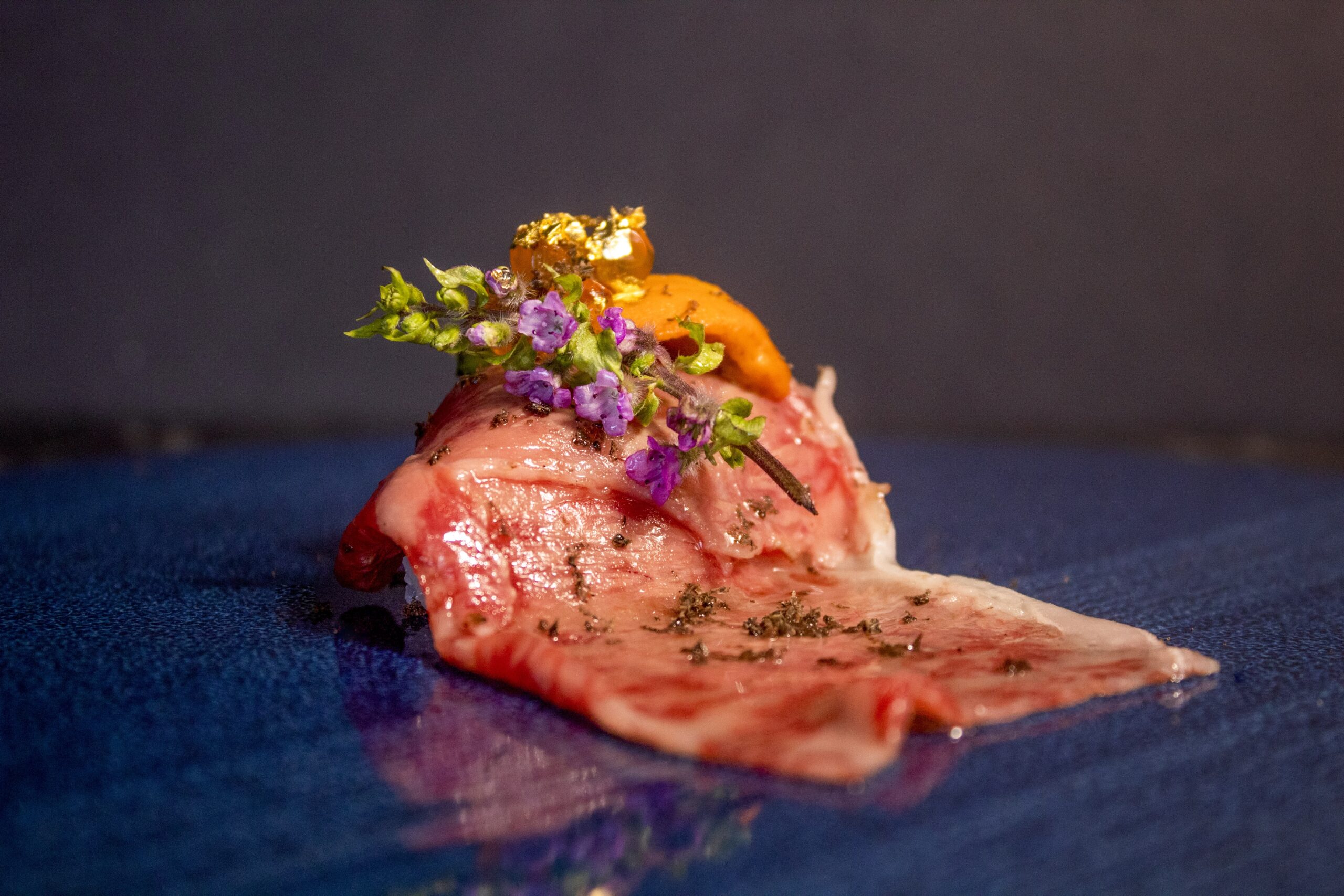
Aburi Restaurants’ seven-course kaiseki included Wagyu beef. Photo by Maria Gonzalez.
I mention to them the lore surrounding wagyu, which purports that some farmers massage their cows. Nakamura explains that while Iwate cattle don’t get such star treatment, they do eat premium Japanese rice, receive exceptional care, and are raised in the healthiest of environments. Circular farming, which involves raising livestock and growing crops side-by-side, ensures sustainable use of the land. The result is a luxury beef, which, Okubo believes, is in a category unto itself. “Wagyu is very fatty, rich in flavour. We want to serve little portions and have customers eat it along with vegetables. Then, they can take that richness—the juice from the wagyu—to enhance the flavour of the other ingredients,” Okubo says.
Aburi Restaurants ran a trial in March, offering a seven-course kaiseki, which featured dishes such as wagyu tataki with sous vide lobster, braised abalone, and applewood smoke; and dashi poached sliced ribeye wagyu with nikiri ponzu, cured spring onion, and aka yuzukosho oroshi (a fermented yuzu chili sauce). “So far, the response has been that it’s so much better than normal meat. People have been telling me it actually melts in your mouth,” Okubo says.
Based on this positive reception, they will make Iwate wagyu a regular fixture on their menus. Steaks and pre-sliced wagyu for sukiyaki and yakiniku for home cooking are currently available at Aburi-To-Go in Yaletown. The Aburi Market, which will launch in West Vancouver in June, will offer a wagyu station that will slice-to-order.
I visit Aburi-To-Go, buying a chuck roll wagyu steak for an unusually luxuriant weekday meal, silently apologizing to my grandmother. Even this modest cut is incredibly tender, the marbling imparting a rich buttery flavour. But as I’m eating, part of me longs to be at an elegant dining establishment, the wagyu expertly served in style. Steven Kett, general manager of Ancora, a restaurant that combines Peruvian and Japanese cooking, sees an appetite for luxury at restaurants since the pandemic. “People are treating themselves better now than they were a couple of years ago. We’ve had pent up time at home, and we’re looking to let loose right now,” he says.
He defines luxury as a special occasion indulgence. “It could be something as simple as a chocolate,” he says. Ancora’s menu seduces with all sorts of luxuries, ranging from Iranian beluga caviar to bottles of premium first-growth Bordeaux. Kett would classify some of their vegetables, such as Peruvian corn (choclo), as luxuries since they are rare in Vancouver.
While he feels social media has created pressure for showy ingredients that will garner likes, he also sees nuanced understanding of luxury. “Rather than just looking for that spot prawn, they want to know where and how that spot prawn came to be. People are more conscious about their dining,” Kett says. Although in the past diners clamoured for Chilean sea bass, they now prefer local sustainable sablefish, even if it’s the most expensive seafood dish. Kett says diners are willing to pay a premium for ingredients that are more environmentally friendly.
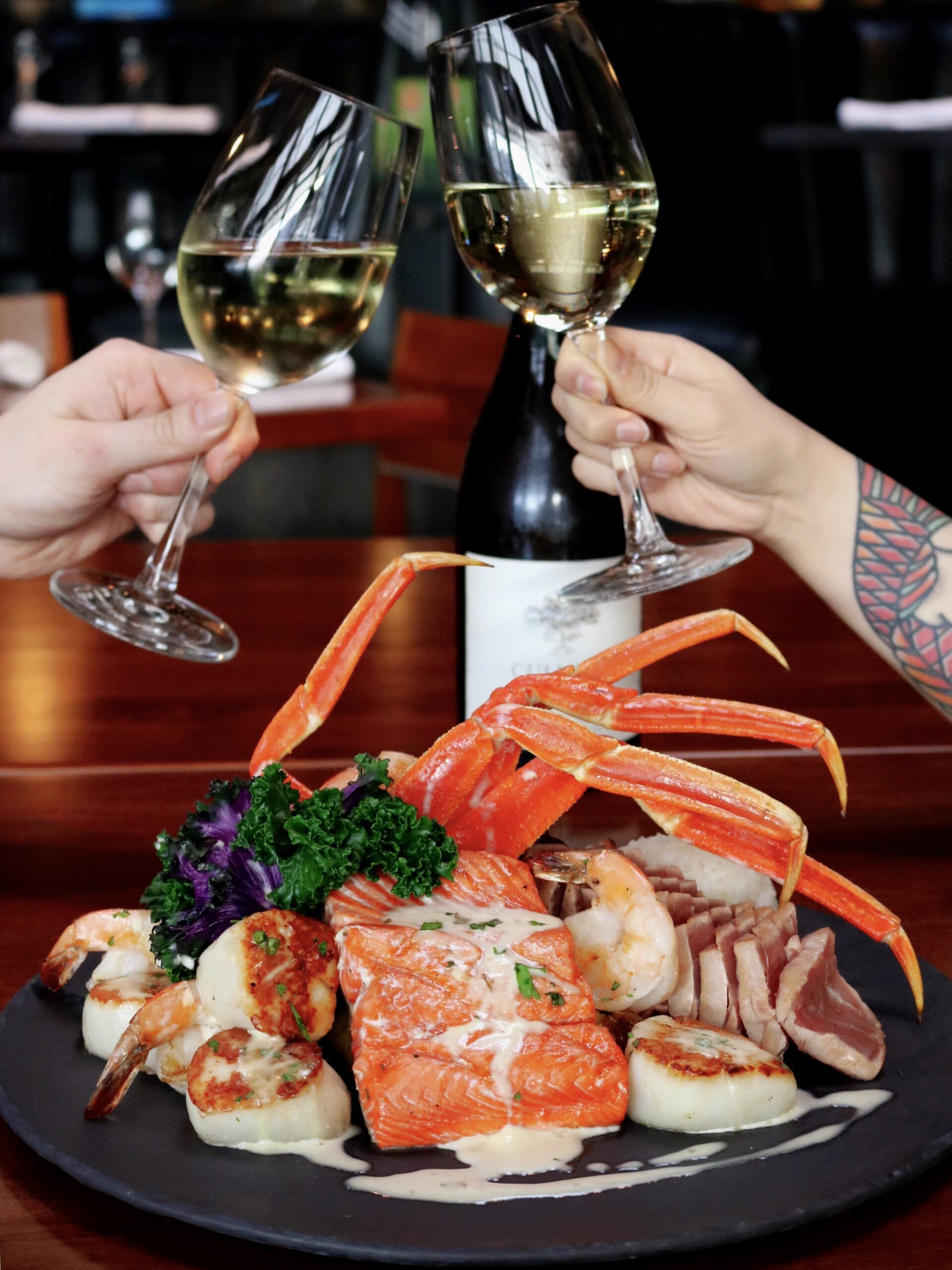
Surf n’ Turf at The Vancouver Fish Company.
A recent meal on the patio of The Vancouver Fish Company with gorgeous views of False Creek makes me think of how much the environment now matters in my eating choices. Seeing something as special prevents over-consumption. “If we’re saying luxury is about lack of availability and keeping things sustainable, I think seafood is a luxury item,” says Stephen Duyzer, managing director and co-owner. He perceives spot prawns as luxuries because they have a short season, they’re local and sustainable, and they have incredible flavour.
The Vancouver Fish Company takes sustainability seriously, working directly with local fishers, such as Pacific Provider, that engage in environmental best practices. The restaurant offers diners a memorable experience with unusual local sustainable seafood. “I think sturgeon is extremely unique, which creates a perception of luxury. Not that many people know how to work with it. Not many people are familiar with its texture and flavour profile,” he says.
When I order sturgeon at the restaurant, the first morsel is revelatory: the texture firm, reminiscent of chicken breast. I can’t remember if I’ve ever had it in a Vancouver restaurant. The kitchen serves the sturgeon on its own, as well as in a premium trio that features local scallops and albacore tuna. Duyzer says that while imported seafood, such as ahi tuna, was once perceived as superior, there is growing awareness that local products are just as good if not better.
Duyzer insists it’s not just about the seafood itself. “You could have the best ingredients in the world, but if you don’t know how to handle them or prepare them, it’s not going to be a pleasurable experience,” he says. And if culinary expertise is what partly makes an ingredient luxurious, then a carrot or potato could become elevated, especially given rising interest in plant-based eating.
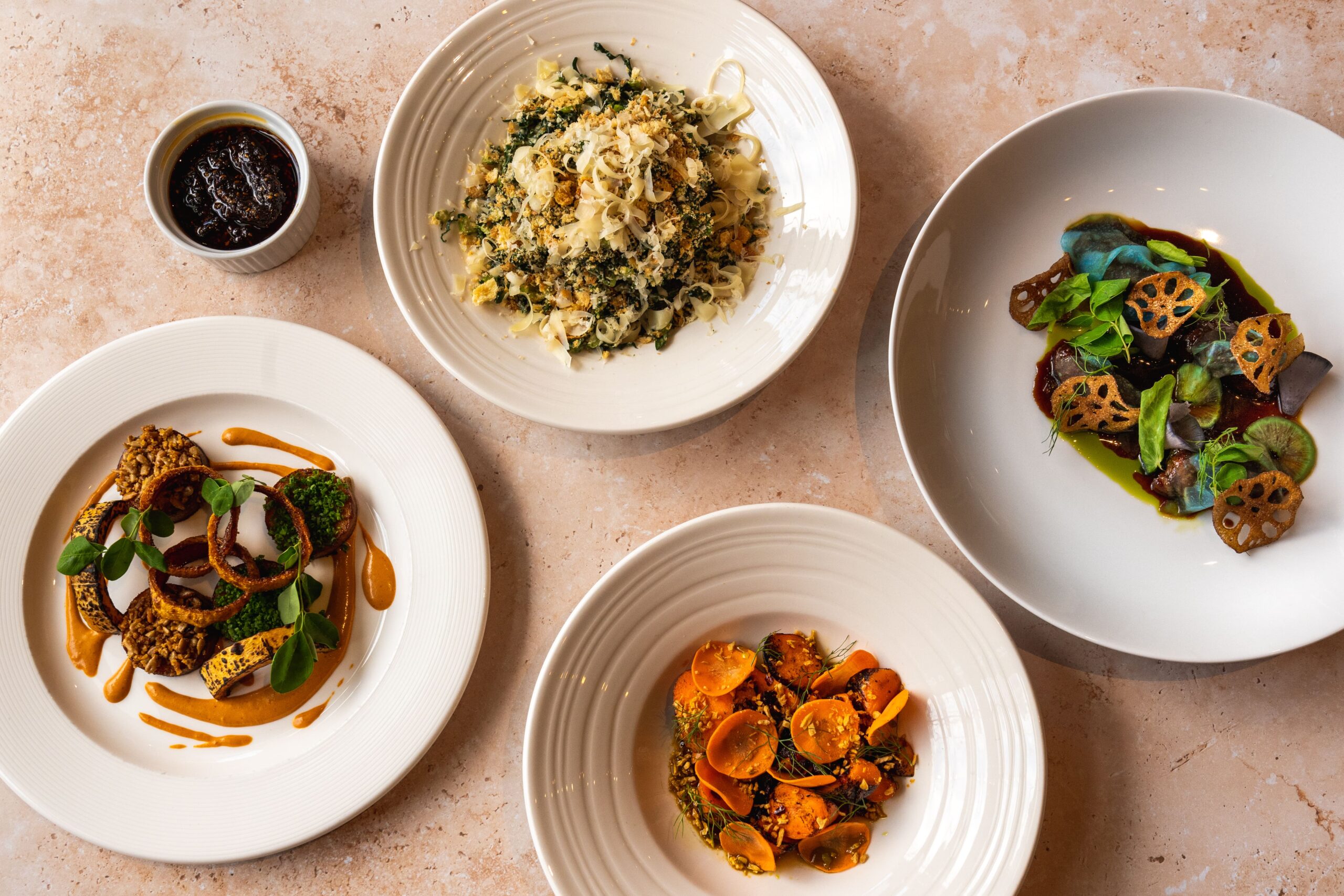
Vegetable forward luxury at Winston. Photo by Rich Won.
At Winston in North Vancouver, I had one of the most unforgettable meals this year, made with the most modest ingredients. I ate smashed sunchokes with ginger scallion dressing, Vietnamese-style chicken with alkaline pasta petals and pork ragu, and the most sublime serving of cabbage, charred and dusted with peach togarashi. Executive chef Douglas Lee playfully calls it Billionaire’s Cabbage, a reminder of how the most pedestrian ingredient can be made exclusive. He says the smokiness of the cabbage produces a memory of eating meat. “For some people, it would be considered a main, and they would consider it luxurious because it reminds them of their carnal instinct,” he says.
Because he cooks in a small unassuming restaurant beyond the downtown core, Lee has less room in his budget for big ticket meats and seafood. Instead, he takes seasonal local produce, such as turnips and kohlrabi, and transforms them through innovative technique. He believes there will always be a place for hyper luxury ingredients. “There are people who are after those things. There are also people who are after more unique things, things that are more creative and outside of the box,” he says. He views vegetables as an exciting challenge since complementary textures and flavours are necessary to give the dish complexity.
Lee didn’t set out to create farm-to-table menus. Instead, he fell into sourcing produce from local farms, such as Zaklan Heritage Farm and Hazelmere Organic Farm, because he sought quality. He aims to serve good food but he doesn’t want to destroy the planet in doing so. “By tradition, luxury hasn’t always been sustainable but it’s also how we perceive things as being luxurious. You could perceive some vegetables as luxurious, depending on where and who you get them from,” Lee says.
Part of his task as a chef is educating consumers about why certain vegetables, such as heirloom tomatoes, are more expensive. “With that price tag comes more care and attention to products,” he says. Sometimes diners initially see a dish of cabbage as ordinary, but as they slowly experience each of its distinct layers, their notions of luxury are deliciously and irrevocably unsettled.
Read more local Food and Drink stories.

